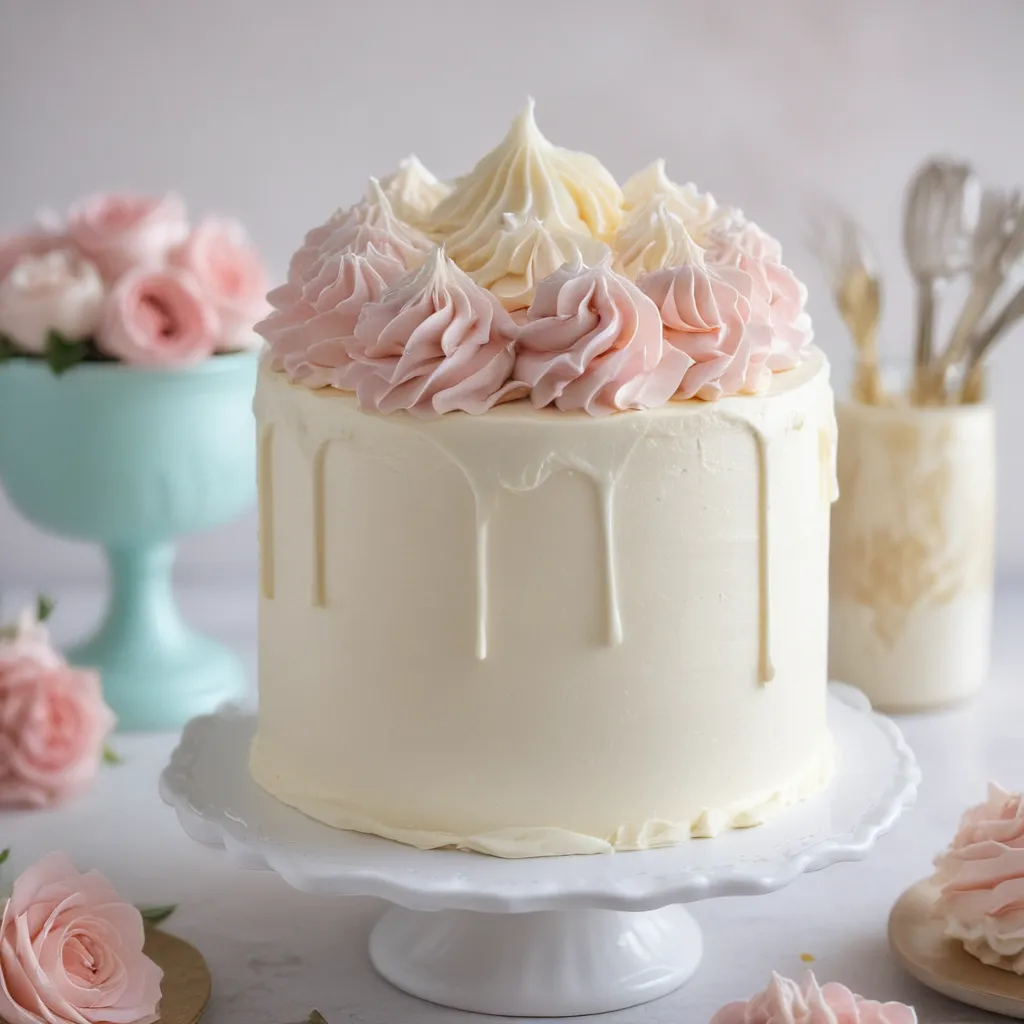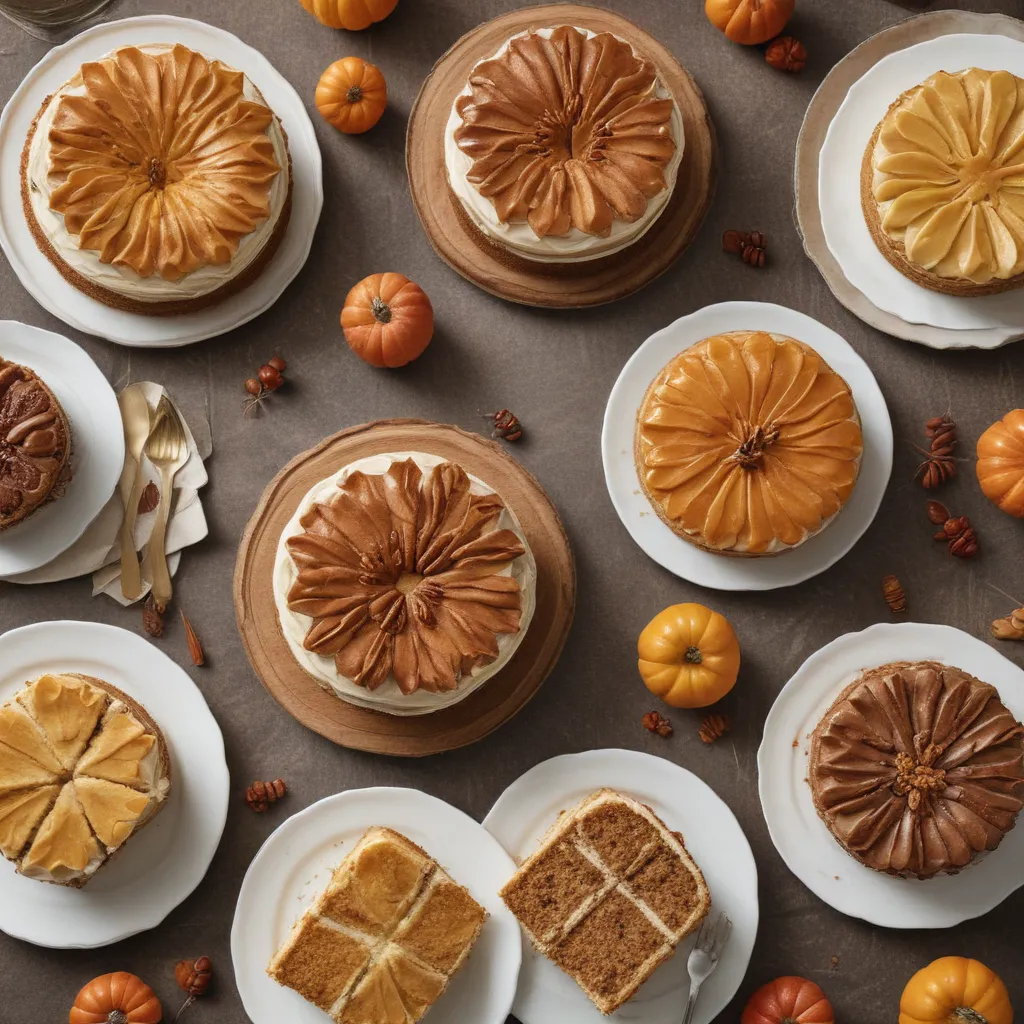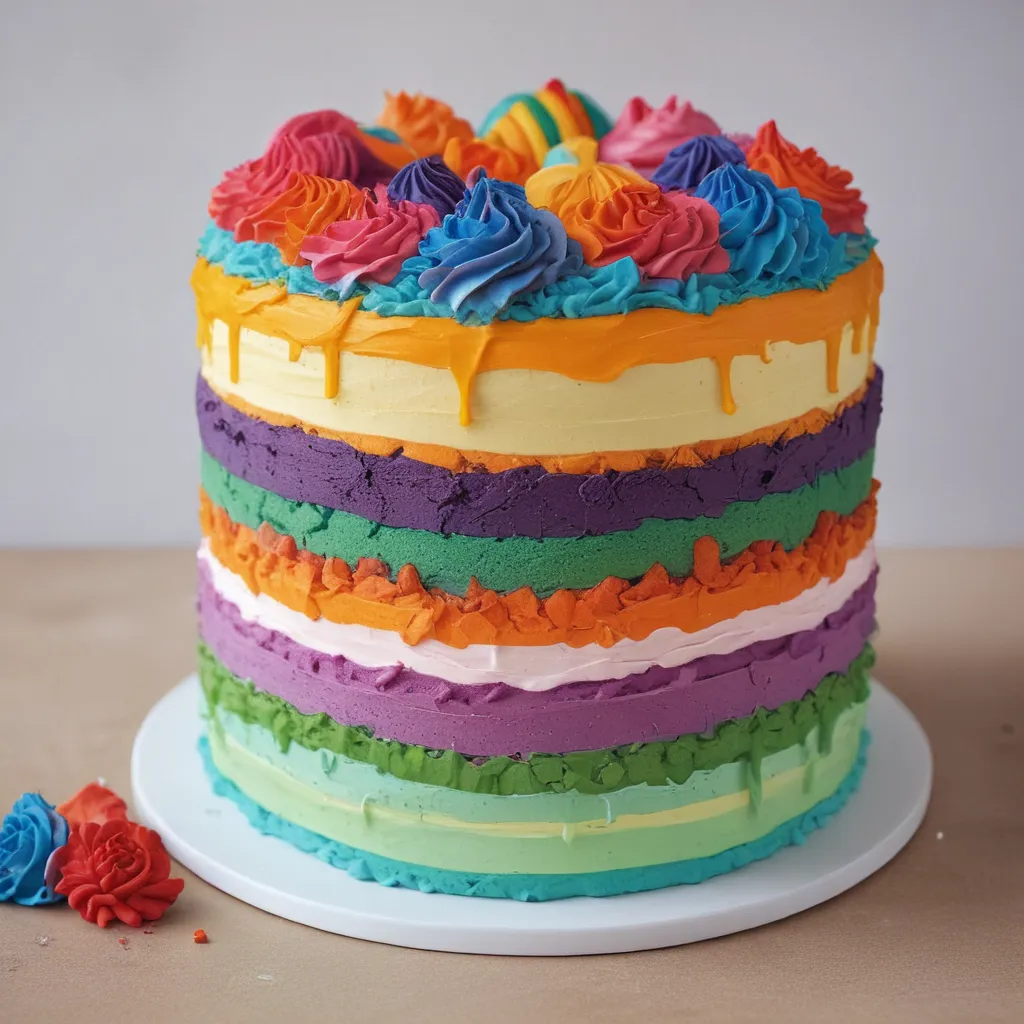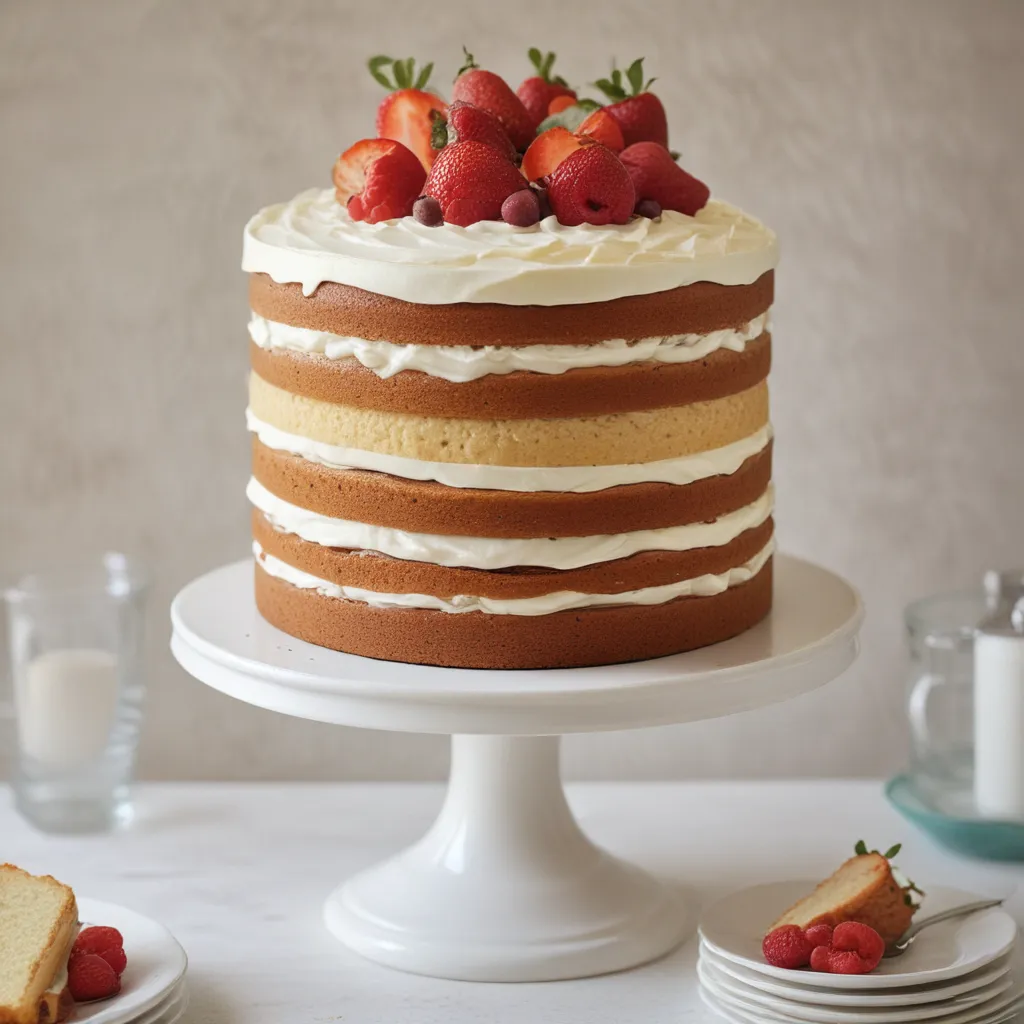
Mastering the Art of Cake Frosting: A Journey to Delicious Perfection
Ah, the sweet, pillowy goodness of a well-frosted cake – is there anything more satisfying? As the owner of Jax Cake Shop, I’ve had the pleasure of creating countless showstopping cakes, each with a frosting that’s worthy of a culinary masterpiece. But let me tell you, it didn’t happen overnight. Nope, it took years of trial and error, endless experiments, and a whole lot of frosting-covered spatulas to get to where I am today.
You see, I’ve always been a bit of a perfectionist when it comes to cake decorating. That smooth, silky frosting finish? It’s kind of my obsession. And let me tell you, achieving that level of frosting finesse is no easy feat. But fear not, my fellow cake enthusiasts! I’m here to share with you the best tips and tricks I’ve learned along the way, so you can create jaw-droppingly beautiful cakes that’ll have your friends and family practically drooling.
The Fundamentals of Frosting Perfection
Before we dive into the nitty-gritty of frosting techniques, let’s start with the basics. You can’t have a stunning cake without a solid foundation, and that foundation starts with the frosting. So, what exactly makes for the perfect frosting?
Well, for starters, it needs to have the right consistency – not too thick and not too thin. The frosting should be smooth, creamy, and easy to work with, allowing you to effortlessly spread and manipulate it on the cake. And of course, the flavor has to be on point. After all, what’s the point of a beautiful cake if it doesn’t taste absolutely divine?
But achieving that elusive frosting perfection isn’t as easy as it might seem. It takes a keen eye, a steady hand, and a deep understanding of the science behind frosting. And trust me, I’ve had my fair share of frosting disasters over the years – from buttercream that’s too soft and sloppy to royal icing that’s as stiff as a board.
The Frosting Conundrum: Buttercream vs. Royal Icing
One of the first decisions you’ll need to make when it comes to cake frosting is which type of frosting to use. And let me tell you, the debate between buttercream and royal icing is a heated one. Both have their own unique advantages and disadvantages, and the choice ultimately comes down to personal preference and the specific needs of your cake.
Let’s start with buttercream. This classic, creamy frosting is made from a simple combination of butter, sugar, and sometimes milk or cream. It’s known for its rich, indulgent flavor and velvety smooth texture. Buttercream is also highly versatile, allowing you to easily pipe intricate designs and create beautiful, swooping swirls. And let’s not forget about the endless flavor possibilities – from classic vanilla to decadent chocolate to zesty lemon, the options are truly endless.
On the other hand, royal icing is a bit more of a diva. This meringue-based frosting is known for its unparalleled smoothness and sheen, making it the go-to choice for creating detailed, intricate designs. It’s also incredibly sturdy, making it the perfect choice for elaborate, tiered cakes. But royal icing can be a bit finicky to work with, and it doesn’t have the same rich, creamy flavor as buttercream.
So, which one should you choose? Honestly, it depends on the specific needs of your cake. If you’re going for a classic, indulgent look and flavor, buttercream is probably the way to go. But if you’re looking to create a sleek, modern design with intricate details, royal icing might be the better option. And hey, who says you can’t use both? A cake with a buttercream base and a royal icing finish can be an absolute showstopper.
The Science Behind Smooth, Silky Frosting
Alright, now that we’ve got the basics covered, let’s dive a little deeper into the science behind smooth, silky frosting. Because trust me, there’s a lot more to it than just mixing up a batch of buttercream or royal icing.
One of the key factors in achieving that elusive frosting perfection is temperature control. You see, the temperature of your ingredients can have a major impact on the texture and consistency of your frosting. If the butter or cream is too cold, the frosting will be stiff and difficult to work with. But if it’s too warm, the frosting can become too soft and sloppy.
The same goes for the temperature of your workspace. Ideally, you want to be working in a cool, climate-controlled environment. Anything too warm or humid can cause your frosting to melt and become a frustrating mess. And let’s not forget about the temperature of your cake itself – if it’s too warm, it can cause the frosting to slide right off.
But it’s not just temperature that you need to worry about. The type and quality of your ingredients can also make or break your frosting game. For example, using high-quality butter and pure vanilla extract can make a huge difference in the flavor and texture of your buttercream. And when it comes to royal icing, the type of egg whites and powdered sugar you use can have a big impact on the final result.
And let’s not forget about the importance of proper mixing technique. Overbeating your frosting can cause it to become too airy and light, while not mixing it enough can leave you with a grainy, lumpy texture. It’s all about finding that sweet spot, where the ingredients are fully incorporated and the texture is silky smooth.
Mastering the Frosting Techniques
Alright, now that we’ve covered the fundamentals, let’s dive into the fun stuff – the frosting techniques that will take your cakes to the next level. Because let’s be real, a well-frosted cake is not just about taste, it’s about creating a visual masterpiece that will have everyone oohing and aahing.
One of my personal favorites is the good old-fashioned crumb coat. This simple technique is a game-changer when it comes to achieving a smooth, even frosting finish. The idea is to apply a thin layer of frosting to the cake, which helps to seal in any crumbs and creates a smooth base for the final layer of frosting. It might seem like an extra step, but trust me, it’s worth it.
Another technique that I absolutely swear by is the “freeze-and-thaw” method. This involves freezing the cake for a short period of time before frosting, which helps the cake to firm up and become more stable. This makes it so much easier to apply a smooth, even layer of frosting without any air bubbles or lumps.
And let’s not forget about the all-important frosting tools. From offset spatulas and turntables to piping bags and tips, having the right tools can make all the difference in the world. Experimenting with different tools and techniques can help you find the ones that work best for your personal frosting style.
But perhaps the most important frosting technique of all is patience. Yep, I said it – patience. Trying to rush through the frosting process is a surefire way to end up with a hot mess. Take your time, work slowly and carefully, and don’t be afraid to step back and assess your work. Trust me, the extra effort will pay off in the end.
Frosting Finesse: Decorative Techniques and Designs
Alright, now that we’ve got the basics of frosting down, let’s talk about taking it to the next level. Because let’s be real, a well-frosted cake is not just about taste, it’s about creating a visual masterpiece that will have everyone oohing and aahing.
One of my personal favorite frosting techniques is the classic swirl. This simple yet elegant technique involves using a offset spatula or piping bag to create beautiful, swooping swirls of frosting on the cake. It’s a great way to add texture and visual interest to your cakes, and it’s surprisingly easy to master.
Another technique that I absolutely love is the “naked cake” look. This involves leaving a bit of the cake exposed, allowing the frosting to take center stage. It’s a bold, modern look that’s perfect for couples who want a more minimalist, rustic vibe. And the best part? It’s surprisingly easy to achieve – just use a light hand when frosting the cake and let that beautiful sponge shine through.
But if you really want to wow your guests, why not try your hand at some intricate, decorative frosting techniques? From delicate rosettes and elegant ruffles to stunning watercolor effects and eye-catching geometric designs, the possibilities are truly endless. And let me tell you, mastering these techniques is not for the faint of heart – it takes practice, patience, and a steady hand. But trust me, the end result is so worth it.
And let’s not forget about the power of color. Whether you’re going for a bold, statement-making look or a soft, pastel palette, the right color choices can make all the difference in the world. Experiment with different color combinations, play with ombre effects, or even try your hand at hand-painting designs onto the frosting. The key is to have fun and let your creativity shine.
Putting It All Together: Frosted Cake Masterpieces
Alright, now that we’ve covered all the ins and outs of frosting perfection, it’s time to put it all together and create some truly show-stopping cakes. And let me tell you, the possibilities are endless.
Take, for example, the stunning naked cake I created for a recent wedding. The couple wanted something a little more modern and minimalist, so we went with a simple yet elegant buttercream frosting that allowed the beautiful sponge to shine through. But to add a touch of whimsy, we incorporated fresh flowers and delicate greenery, creating a truly breathtaking centerpiece for their special day.
Or how about the birthday cake I made for a little girl who was obsessed with unicorns? I started with a light and fluffy vanilla buttercream, then used piping techniques to create a magical, iridescent horn on top. To finish it off, I added a dusting of edible glitter and a sprinkling of colorful sprinkles – the perfect way to capture the whimsy and wonder of a unicorn-themed celebration.
And let’s not forget about the towering, three-tier cake I created for a client’s big anniversary party. This one was all about the drama, with a sleek, modern royal icing finish and intricate, hand-painted floral designs that cascaded down the sides. It was a true showstopper that had the whole room buzzing.
At the end of the day, the key to creating these frosting masterpieces is to just have fun and let your creativity shine. Experiment with different techniques, play with color and texture, and don’t be afraid to think outside the box. After all, the best cakes are the ones that truly reflect the personality and style of the person they’re for.
So, whether you’re a seasoned cake decorator or a complete newbie, I hope these tips and tricks have inspired you to take your frosting game to the next level. Because let’s be real, a well-frosted cake is not just a dessert – it’s a work of art. And trust me, the satisfaction of creating something truly stunning is worth every bit of the effort.
Happy frosting, my friends!





